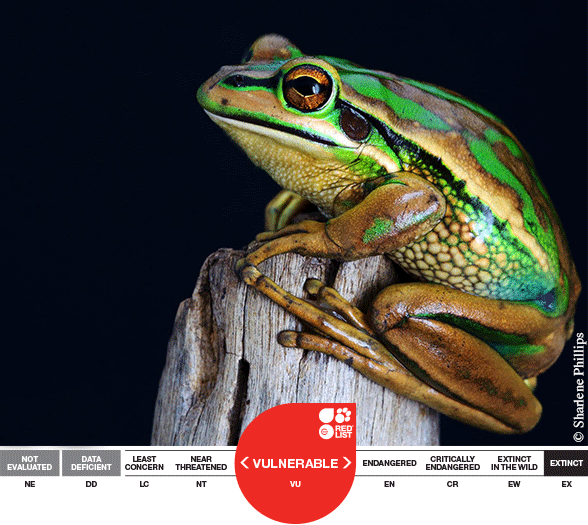
The Green and Golden Bell Frog, Litoria aurea, is a large native Australian frog. It’s so big it’s been known to eat mice! It can be found in Australia’s lower elevations from East Gippsland in Victoria to Byron Bay in New South Wales. It has been introduced to New Zealand, and is shuttled between the North and South Islands by pet traders, although it is only found in the wild in the upper half of the North Island. The Green and Golden Bell Frog is listed as ‘Vulnerable’ on the IUCN Redlist of Threatened Species.
There are likely to be multiple causes of decline in this species, including disease due to chytrid fungus. Chytrid fungus appears to be a contributing factor in the decline and loss of a number of populations and a factor limiting the success of reintroductions. Additional threats include habitat loss and the impact of introduced fish. Before its decline, this species was considered to be one of the most common frog species in south-eastern Australia.
The Green and Golden Bell Frog occurs in several protected areas, and lots of research into its threats and conservation have been done. Newcastle University have an active research and reintroduction program for this species, investigating the impact of disease on populations. Taronga Zoo have also conducted reintroduction programs, releasing around 27,000 captive-bred tadpoles and frogs since 1996 at five different sites near Sydney.
